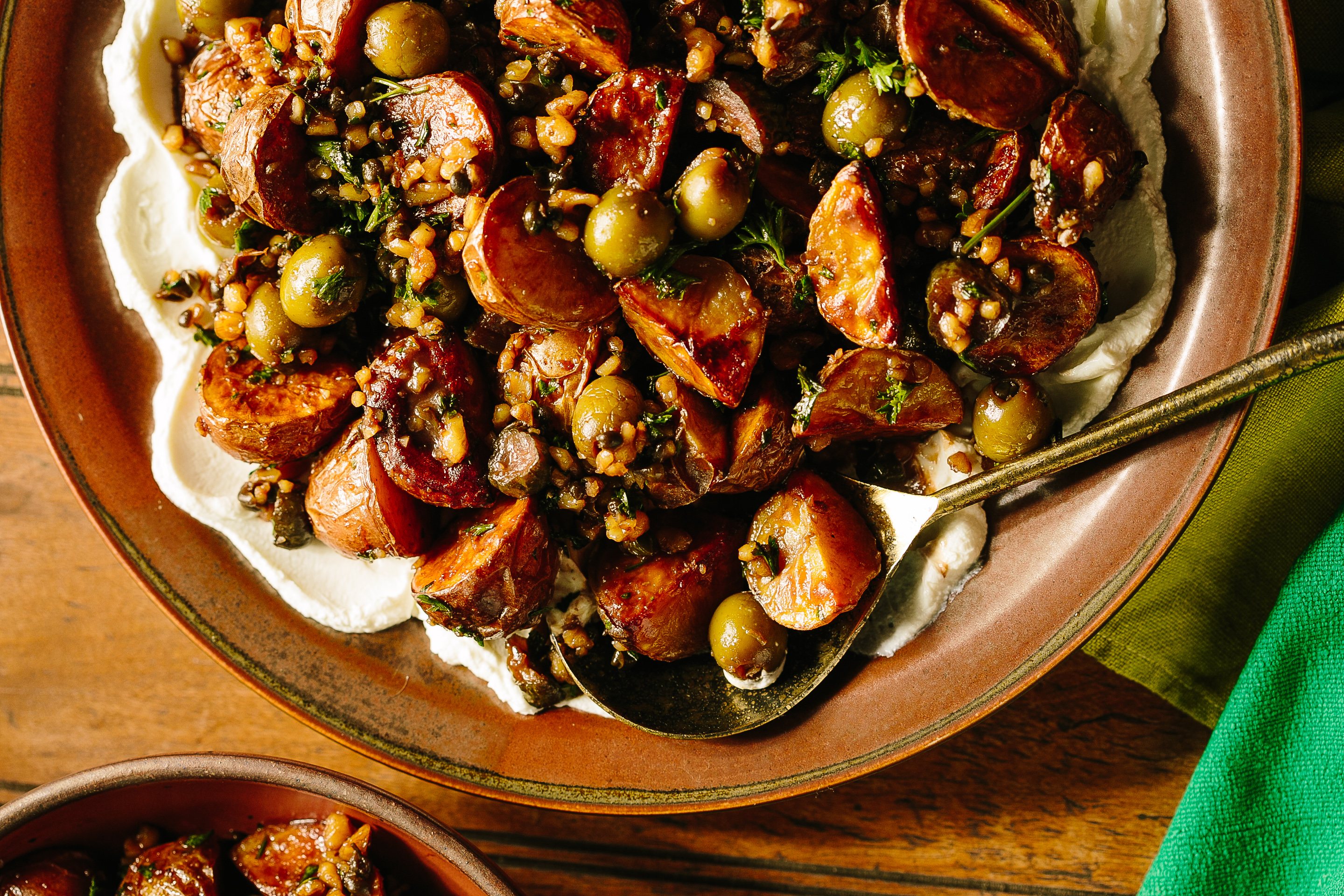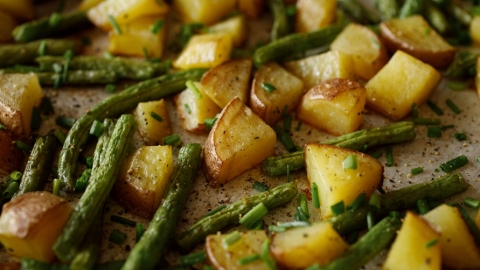In-Season: Potatoes
Whether boiled, mashed, roasted, steamed, fried or baked, potatoes have become an integral part of American cuisine, and for good reason. I like to think of them as shapeshifters. These spuds can be prepared in thousands of ways, and there are roughly 5,000 varieties in the world today.
Native to the Americas, potatoes are the underground tuber of the herbaceous perennial Solanum tuberosum. They do not fall into the same category as root vegetables, even though they are often mistaken as such, and their naturally occurring bitter, toxic compounds make them harmful to eat when raw. Once cooked, potatoes have a mild sweetness and, depending on the variety, starchy, buttery, earthy or nutty flavors as well. While over 200 varieties of potatoes are sold in the United States, six key categories are most often cultivated and sold in our region.
Russet: Also referred to as “Idaho potatoes” or “baking potatoes,” the russet is the most widely consumed variety. It’s high in starch, making it fluffy on the inside once baked yet crispy on the outside when fried. Because of its texture and delicate flavor, it’s the best option for French fries, mashed potatoes and baked potatoes.
Red: One of the most versatile types, red potatoes fall between starchy and waxy, which makes them deliciously smooth and creamy no matter how they are prepared. Red potatoes can be used for any dish because they can hold their shape once cooked and perform well when mashed. However, their waxiness requires a gentle touch when mashing. Use a hand masher and don’t overmix.
Yellow: Another all-purpose category, yellow potatoes are medium in size with creamy flesh, buttery flavors and a pleasing yellow hue. Yukon Gold is our region's most common yellow variety and can be used in almost any recipe, but whenever butter is involved, grab this variety.
Blue/purple: The most striking visually of all the categories, these potatoes have a deep blue, purple skin with an even brighter shade on the inside. They are starchier than other types and have an earthy, nutty flavor profile. They add a beautiful pop of color to side dishes and can be roasted, boiled, baked or mashed. Their nutty flavor pairs well with fresh green salads.
Fingerling: Fingerling potatoes come in several varieties and are waxy and firm. They are small and oblong, finger-shaped, with a nutty flavor. Because of their thin skin and small size, they are best when roasted whole or used in recipes that call for them to keep their shape.
Petite: Sometimes referred to as “baby potatoes,” “new potatoes” or “creamers,” this category encompasses any type of potato that is extra-small and harvested before it reaches maturity. Their texture and flavor are more concentrated than those of their larger, fully grown siblings, and their petite size makes for a quicker cook time. They are delicious when roasted and are great for potato salads.
Selecting:
Regardless of the variety, select potatoes that have no visible green color to the skin. Green usually means the potatoes have been exposed to too much light, which increases the bitter, toxic solanine compound that can cause stomach upset even when cooked. Select potatoes that are firm to the touch and remove minor bruises or imperfections before preparing.
Storing:
Potatoes can last a few months when stored properly. To prevent spoiling, avoid washing them until time to cook. Store potatoes in a well-ventilated paper/mesh bag or basket that allows moisture to escape. Store the bag in a dark, dry, cool location away from other fruits and vegetables. A temperature around 50° is ideal; the refrigerator is too cold and turns the potato’s starches into sugar, affecting the taste and texture. Keep them out of sunlight.
Pairing:
Apples, arugula, basil, beans, beef, beets, butter, cabbage, capers, carrots, cauliflower, cheese, chicken, cilantro, corn, cream, cucumbers, dill, eggplant, eggs, fennel, fish, garlic, ginger, grapes, honey, kale, lemons, lettuce, limes, maple, milk, mint, mushrooms, mustard, nutmeg, nuts, olives, onions, oranges, parsley, pears, peas, peppers, pomegranate, pork, rosemary, sage, sesame, spinach, squash, thyme, tomatoes, turkey, wheat.
Ashley Swartzendruber is Edible Michiana’s recipe editor, stylist and photographer based in Goshen, Indiana. She can be found cooking, eating and photographing local food in her home or exploring Michiana with her family. You can find more of her photos, styling and motherhood musings on her Instagram @mywildhaven.






